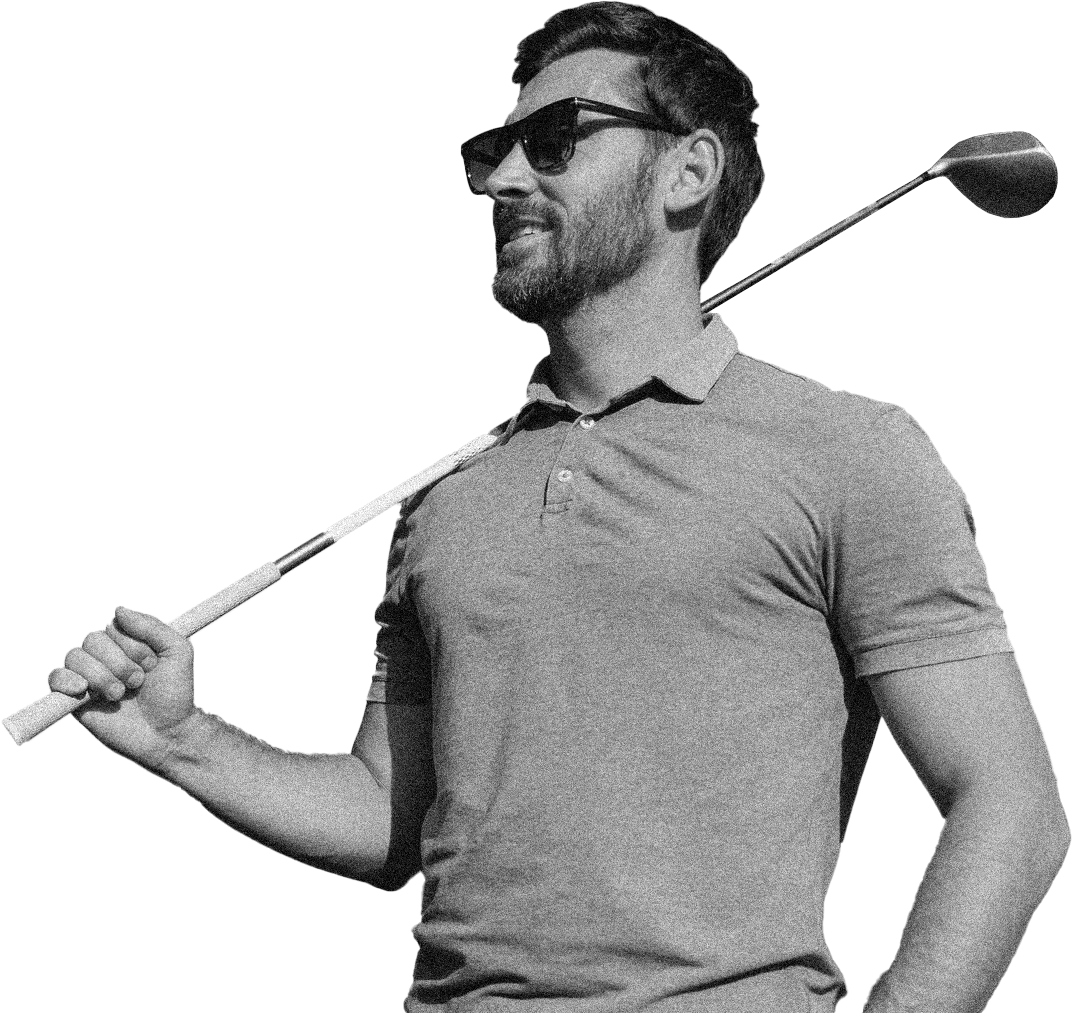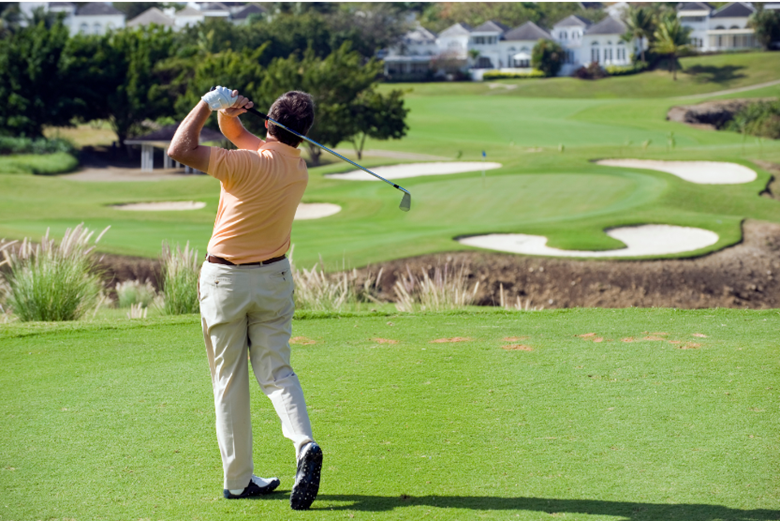Often, whether I’m visiting the McLemore Golf Courses or anywhere else, I find that my clients are making decisions about their golf games that might not fit the conditions they are facing. This has more to do with each golfer not fully being aware of the various conditions they are facing. Which is different for each shot. Which is why I felt it necessary to pen this month’s blog post about how to understand when conditions provide you permission to hit the shots you think you’re capable of.
When Conditions Provide You Permission – Why?
Ultimately, the decision on what shot you should play depends upon your assessment of your skills. This is one of the major themes we discuss during a John Hughes Golf coaching session. And how your skills, along with your golf clubs, can create a shot that creates a positive result, within the odds of you creating a positive result. Meaning, if your skills and your clubs can not create a shot that provides the best odds of a positive result, then you should not be playing the shot! And we have yet to discuss the conditions that provide you with the odds, or permission.
The conditions providing you permission are sometimes variables you have no control over. And others you do have control of. And those variables can determine a lot, regardless of your skill level. There are countless examples of this, such as Jean Van De Velde at the 1999 Open Championship. We can all look back at the events of his final hole and realize that the conditions he was in did not dictate the decisions he was making. And he was at the time a world-class golfer.
What are the Conditions that Provide Me Permission?
Making unique adjustments to club selection and ultimately how you set up to each shot depends upon the unique set of circumstances that are part of the current shot you are attempting.
Golf is a game of strategy and decision-making, and players often adjust based on their unique circumstances and goals for each shot. Let’s tackle the easier conditions or variables first.
- Distance – The distance to the target, in carry yards, to your desired landing area is an important factor. Most all golfers make distance their #1 variable when determining what club to choose. But another, more important variable can alter club choice.
- Lie – This is the variable all great players determine first. It can dictate a lot of the odds of you successfully executing any shot.
Arguably, these 2 conditions are conditions you have some control over. And are normally the first conditions you learn as a golfer to recognize and plan for. Determining what club is best to use, based upon how the ball lies, is a fundamental decision-making skill that all great golfers possess. Now let’s deal with the conditions that create multiple variables in deciding when conditions provide you permission.
The Conditions You Don’t Control
The conditions that provide you permission to hit a particular shot can vary based on the situation you face. These conditions can vary from hole to hole within a round of golf. And can also vary day to day playing the same golf course. There are countless conditions, but here are the most obvious and the most influential you’ll face with each shot.
- Hazards and Obstacles – Water, trees, bunkers, bushes, canyons, and other items found on any hole influences the conditions you face with each shot. You must determine the risk and reward odds of taking on these items to decide whether you should challenge the item or navigate around it.
- Wind and Weather – Wind is always a factor. And most of the time it is a deterring factor, not a positive factor. In most cases, wind reduces carry distances. Which is something most amateur golfers do not take into consideration when choosing a golf club for any shot. Are you factoring in temperature? Temperature affects how fall the ball will fly. So will humidity.
- Course Design – Every golf course has its own unique set of design characteristics that set it apart from all others. Falcon’s Fire, my home in Orlando, has greenside bunkers that extend to the front of each green, sometimes forcing a golfer to play long explosion shots. Which are arguably the toughest shots in golf. McLemore’s Highlands Course, my home away from home, features 3 distinct types of design themes, highlands, parkland, and canyon. And the new course, the Outpost, will feature all those qualities and more, making McLemore Golf Courses unique to any on the eastern seaboard. When considering course design, the simple elements of doglegs, elevated greens and bunker placement are easy to spot. It’s the smaller nuances of each course that play a bigger role in determining permissible conditions.
- Hole Locations – Arguable the one condition most golfers overlook, causing missed greens to happen most often. If a golfer’s predominant ball flight does not match the hole location, yet they play aggressively to the hole location, odds are the conditions got the best of you.
- Uneven Lies – Another condition most golfers overlook. This is not about skill as much as it is recognizing you’re in a condition that is not flat. And understanding how to adjust your set up positions to accommodate for the unevenness you’re experiencing.
The One Condition You Have Complete Control Of
Your Skill and Comfort Level! Your individual skill level should be the single most important and determining factor in whether the conditions provide you permission.
Ultimately, the decision to play any shot depends upon your assessment of your skill level. Do you have the skills to pull that shot off? If not, then why are you trying to do so in a competitive situation? Even the more experienced players of the world retreat from challenging situations if their skill level that day is not up to the conditions of any shot they face.
Assess your own skill level with every shot you attempt. And if your comfort level standing over the ball is one that makes you feel uneasy, then back away and reassess the conditions. If you have successfully executed a similar shot in the past, yet you feel uncomfortable today, then chances are you won’t pull the shot off again. No matter your skill level. Always listen to your gut. And make the adjustments necessary, before attempting any shot, regardless of the conditions.
Conclusion
Ultimately, the decision is yours. Do the conditions provide you permission? Or are you forgetting or choosing to ignore all the conditions that determine the odds of you pulling any shot off?
Your assessment of conditions, related to your personal style and game strategy, can lead to improved results quickly. It is not uncommon for me to help a client to determine what conditions provide permission and knock as many as 10 strokes off a score. That is because that client had never thought about the conditions, their real skill and comfort level, and how all this plays an integral part in their success as a golfer.
Never forget that conditions are infinite and always evolving throughout a round of golf. Your ability to incorporate these conditions into your decision-making process is what makes or breaks any round. Always remember to determine the conditions that provide you permission for every shot. And the chances of you shooting lower scores significantly improves.
If you need assistance understanding how to determine what conditions provide you permission, why not schedule a coaching session with John Hughes Golf?





